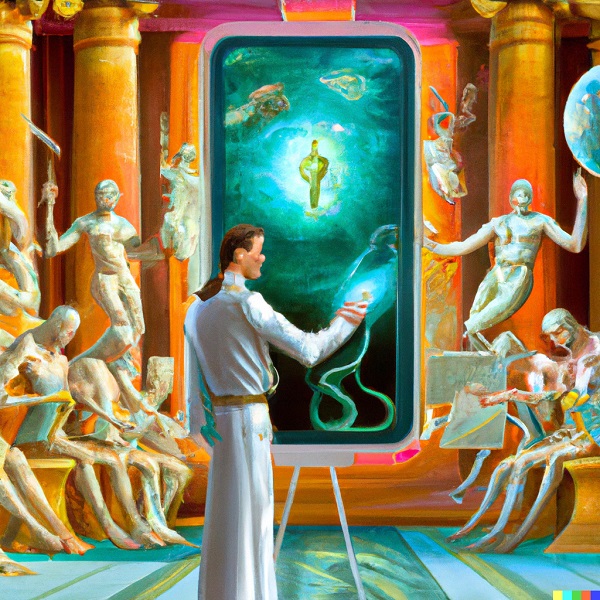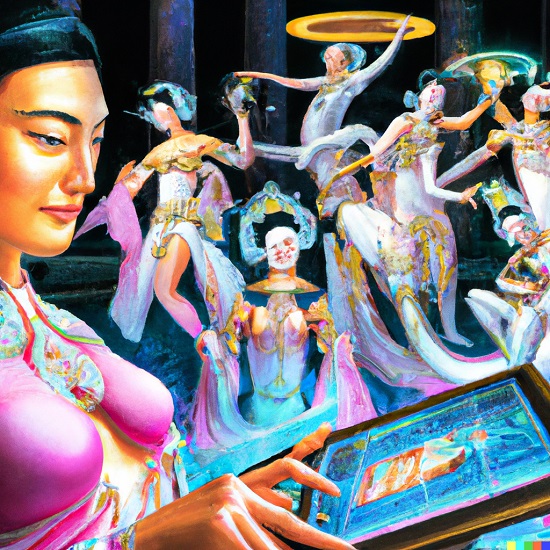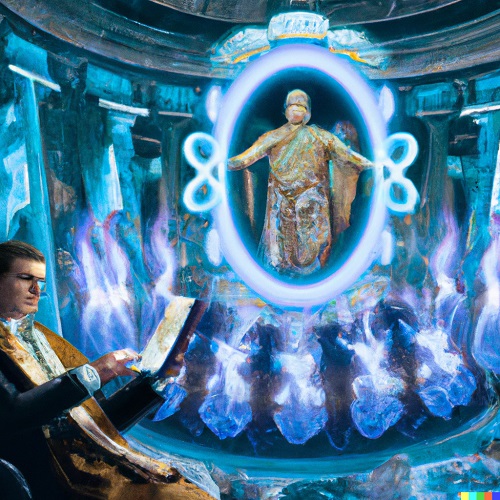
Art has been an integral part of human culture for centuries. It has evolved over time, and today, we witness the emergence of a new trend that promises to revolutionize art as we know it. This trend is the use of Artificial Intelligence (AI) models in art. AI models are powerful tools that can be used to create art that is both beautiful and innovative. In this article, we will explore why using AI models is the future of art.
What is Artificial Intelligence and How Can It Create Art?
Artificial Intelligence is a branch of computer science that deals with the development of intelligent machines that can perform tasks that typically require human intelligence. AI involves the use of algorithms, data analytics, and machine learning techniques to enable machines to learn from experience, recognize patterns, and make decisions based on data.
AI models can be trained to create art in various ways. One common method is through the use of Generative Adversarial Networks (GANs), which are neural network models that consist of two parts: a generator and a discriminator. The generator creates new images or sounds, while the discriminator assesses the quality of the generated output. The generator is then trained to produce better output until the discriminator can no longer distinguish between the generated output and real output.
Another method is through the use of machine learning algorithms that analyze large amounts of data to identify patterns and generate new content. For example, an AI model can analyze a large number of paintings by a particular artist and then generate new paintings that are similar in style and technique.
AI models can also be used to create interactive art, where the art responds to the viewer’s input. For example, an AI model can analyze the viewer’s facial expression or body language and generate a response that is tailored to the viewer’s emotional state.
AI-generated art is a new and exciting area of the art world, offering endless possibilities for creativity and innovation.
AI in Art
AI has opened up a whole new world of possibilities in the field of art. Artists can now use AI models to create works that are both innovative and thought-provoking. One of the areas where AI is making a significant impact is in the creation of digital paintings and sculptures. With AI, artists can create works that have never been seen before, using various styles and techniques to generate unique and aesthetically pleasing pieces.
Another area where AI is making a significant impact is in the creation of music and dance performances. AI models can analyze patterns in music and movement to create new and unique pieces. For example, the technology behind DeepMind’s AlphaGo has been used to create an AI musician that can generate original music in real-time. Similarly, AI models have been used to create dance performances that are choreographed by algorithms that analyze the movements of the dancers.

AI models can also be used to analyze images and sound, leading to new and exciting works of art. For example, AI models can be used to analyze a painting and generate new images that are similar in style and technique. This can lead to new and innovative ways of creating art, where artists can explore different styles and techniques.
Furthermore, AI models can be used to generate new works of art that are entirely unique. AI models can analyze vast amounts of data and identify patterns that can be used to create new and unique works. This can lead to exciting new art forms that are not bound by traditional artistic techniques or styles.
AI is playing an increasingly prominent role in art, opening up new possibilities for artists to explore. AI models can be used to create works that are both innovative and aesthetically pleasing. AI is not replacing human creativity but rather, it is augmenting it, leading to new and exciting forms of art that have never been seen before.
Advantages of Using AI Models in Art
Endless Possibilities:
One of the significant advantages of using AI models in art is that it allows artists to experiment with various styles, techniques, and mediums, leading to endless possibilities in art. With AI, artists can generate new artworks that have never been seen before. AI models can analyze vast amounts of data, recognize patterns and generate new styles and techniques that can lead to the creation of unique and innovative works of art. This endless possibility makes art more exciting and dynamic, opening up new horizons for artists to explore.
Efficiency:
Another advantage of using AI models in art is that they can automate many tasks, making the creative process more efficient and allowing artists to focus on the creative aspects of art. This can save a lot of time and resources. For example, AI models can be used to automate color correction and image retouching in photography, reducing the time needed for editing. Similarly, AI models can also help in the creation of music, where they can automate the process of composing, mixing, and mastering, allowing artists to focus on the creative aspect of music production.
Accessibility:
AI models make art more accessible to people with disabilities. For example, people who are visually impaired can now experience art through the use of AI-generated audio descriptions. Similarly, AI models can generate 3D models of artworks that can be explored through touch for people with visual impairments, allowing them to experience art in a new and exciting way. This accessibility helps make art more inclusive, allowing more people to appreciate and enjoy it.
Collaborations:
AI models can facilitate collaborations between artists and AI experts, leading to new and exciting artworks that combine the best of both worlds. For example, AI models can be used to generate music that is then remixed and reinterpreted by a human musician, leading to new and exciting musical experiences. Similarly, AI models can be used to generate images that are then manipulated by a human artist, leading to new and unique artworks.
Cost-effective:
AI models can reduce the cost of producing artworks. For example, an artist can use AI models to generate a painting or sculpture, which can then be 3D printed or reproduced digitally, leading to a reduction in production costs. Similarly, AI models can help in the creation of music, where they can automate the process of composing, mixing, and mastering, leading to a reduction in production costs.
These advantages make art more dynamic, inclusive, and innovative, leading to new and exciting art forms that have never been seen before. With AI, artists can explore new horizons, experiment with new techniques and styles, and create artworks that are truly unique and groundbreaking.

Challenges of Using AI Models in Art
Authenticity:
One of the significant challenges associated with using AI models in art is the concern that AI-generated art may lack authenticity and may not be considered “real” art by some people. Some people argue that art is a product of human emotion and creativity and that machines cannot replicate this. There is a concern that AI models may produce art that lacks the human touch, emotional depth, and personal expression that is often associated with traditional art forms. This can lead to a debate about what constitutes real art and may undermine the value and importance of traditional artistic skills.
Ethics:
Another challenge associated with using AI models in art is the issue of ethics. AI models can generate images and sounds that are ethically questionable, such as hate speech or offensive content. This raises concerns about the potential misuse of AI models in art and the need for ethical guidelines and regulations to prevent such misuse. There is also a concern that AI-generated art may perpetuate stereotypes or biases, particularly in cases where AI models are trained on biased datasets.
Dependence on Technology:
Another challenge associated with using AI models in art is the risk that artists may become overly dependent on technology and lose touch with their artistic skills. AI models should be seen as a tool to aid the creative process, not as a replacement for human creativity. There is a concern that artists may become too reliant on AI models and neglect traditional artistic skills, such as drawing or painting. This can lead to a reduction in the diversity and quality of art and may undermine the value of traditional art forms.
The challenges associated with using AI models in art need to be addressed to ensure that AI is used in a responsible and ethical way. AI models should be seen as a tool to aid the creative process, not as a replacement for human creativity. Ethical guidelines and regulations should be put in place to prevent the misuse of AI models in art, and artists should be encouraged to maintain traditional artistic skills while exploring the new and exciting possibilities offered by AI. By addressing these challenges, we can ensure that AI models are used in a responsible and ethical way to enhance and enrich the field of art.
Conclusion
In conclusion, the use of AI models is the future of art. AI has already shown tremendous potential in creating unique and innovative works of art. It has the potential to transform the art world, leading to new styles and techniques that have never been seen before. Although there are challenges associated with using AI models in art, they can be overcome through ethical guidelines and proper use of technology. With AI, the possibilities for art are endless, and we are only scratching the surface of what is possible.